With our destination being Nájera, today is going to be a hot one. Max of 31°C with light winds and no clouds. A good day for the UV umbrella. But let’s not get ahead of ourselves, the sunrise is spectacular on the outskirts of Navarette.
We walked well-made paths through parklands, then past market gardens, before beginning a steady ascent. It’s the way of the Camino.
Parts of the path are poorly maintained and deeply rutted. Seeing the cyclists pushing their bikes over this terrain — I didn’t envy them.
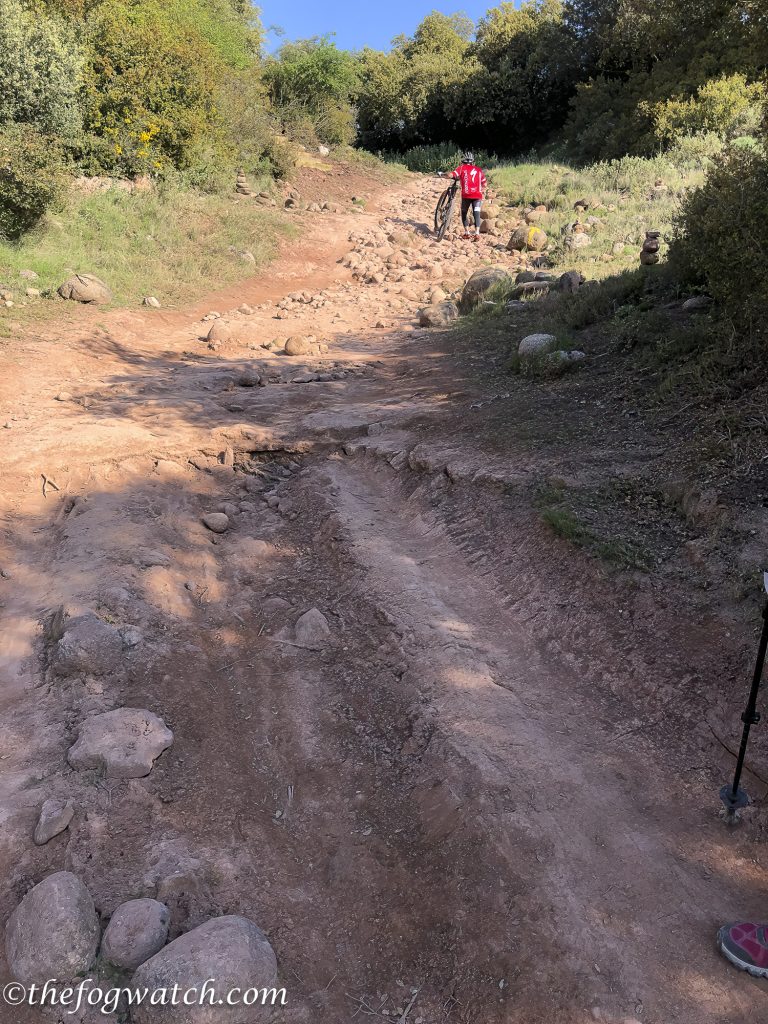
On the Camino, cyclists are like quantum particles suddenly blinking into existence, then vanishing just as quickly. You can look back on 300m of empty track, turn back to look ahead — and there they are, right beside you, sometimes with a cheery ‘Buen Camino’ dopplering into the distance, and rarely, a bell. Then they’re gone disappearing around a corner or already cresting the next hill, leaving us panting with adrenaline.
Perhaps the reported apparitions of Mary, or of St James during the battle of Clavijo were just cyclists appearing from another dimension or another time. I always appreciate bells, whether on cows or bikes —the latter, especially, if sounded with sufficient time to allow tired pilgrims to get out of the way and give them some room. And yes I do get it — as a past cyclist I know the sound of the bike, its tyres, creaks, and rattles, always seems so loud you think everyone can hear you from 100 metres away — but the sound is traveling through the handlebars and through your bones so it’s always amplified for the rider.
Today’s bikes are incredibly fast and efficient machines, and they are whisper quiet, despite what your own ears are telling you. The only other issue we had with bikes was knowing which way to dodge — In Australia, we drive on the left so we sometimes dodge the wrong way, anticipating that the bike will try to pass on our right — the joys of traveling through the looking-glass! Luckily most of our bike encounters were with considerate riders.
As the day warmed, Ventosa came into view, and with it a welcome bar open for tortilla patata, tea, and best of all, fresh squeezed orange juice. ‘Naranja Zuma’! It even sounds exciting, like a new Japanese exercise craze with music and animé backing tracks. Just the sound of it makes your mouth sing. Delicious!
Ventosa is about 7-8km from Navarrete, leaving about 11km to Nájera. Again the path seems a little re-routed to avoid some of the busy freeway stretches. I wonder if Medieval pilgrims thought the Roman roads were too noisy and busy with traffic, merchants, military, or holidaymakers, (otherwise known as other pilgrims) — or maybe they just used them because at least they’re not so uneven and muddy. The Romans pretty much laid the foundations for the Camino routes we see today. But more on that when we come to the Meseta…
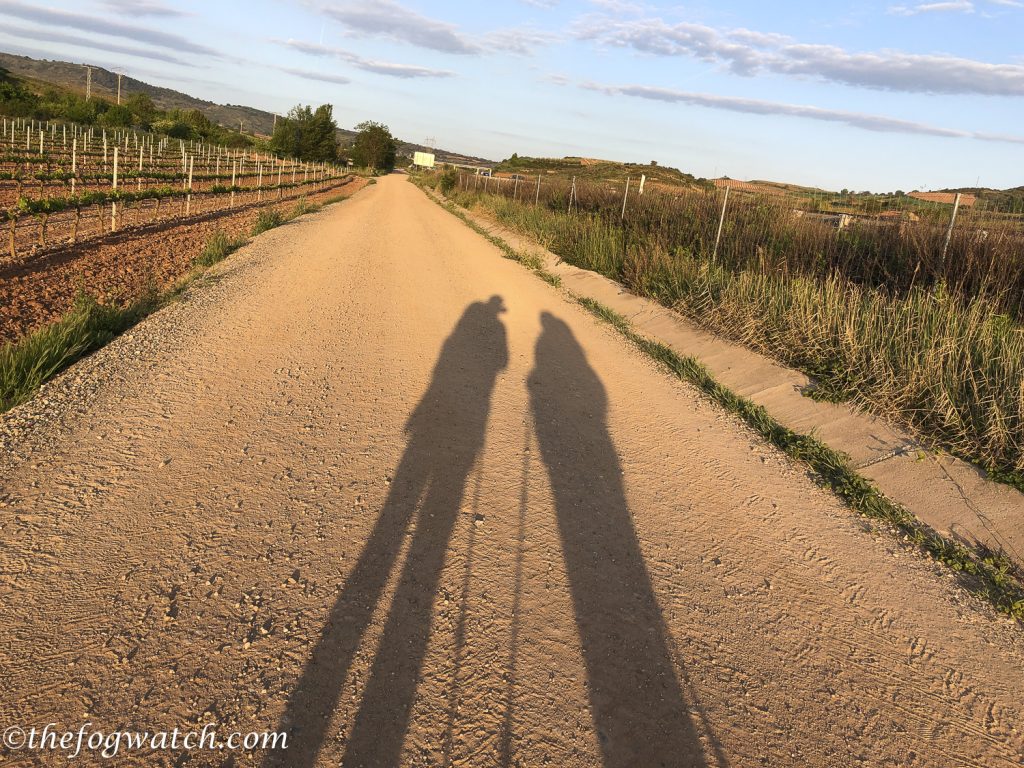
We had a steady climb to Alto San Antonio before the undulating but descending path towards Ventosa.
As we approached Ventosa we took a slight side-track to follow the One Kilometre of Art (1 kilómetro de arte) display. This is a photographic display of images out in the environment. So it was a welcome diversion from stretches of agricultural landscape. Artists and local residents from Ventosa created the project. Its aim is to develop interventions that move art to a natural environment. The Spanish Government, the European Union, and local businesses financed the project.
The goal is to pay homage to those landscapes that have witnessed in silence the passage of time and, since ancient times have been crossed by the “Clazada Romana de Italia in Hispanias, The Way of St James and later by bridle paths used by travelers and merchants.
— Ayumiento de Ventosa
The path rejoins the Camino at the church of San Saturnino (or Saint Sernin, first bishop of Toulouse) at the entrance to the village.
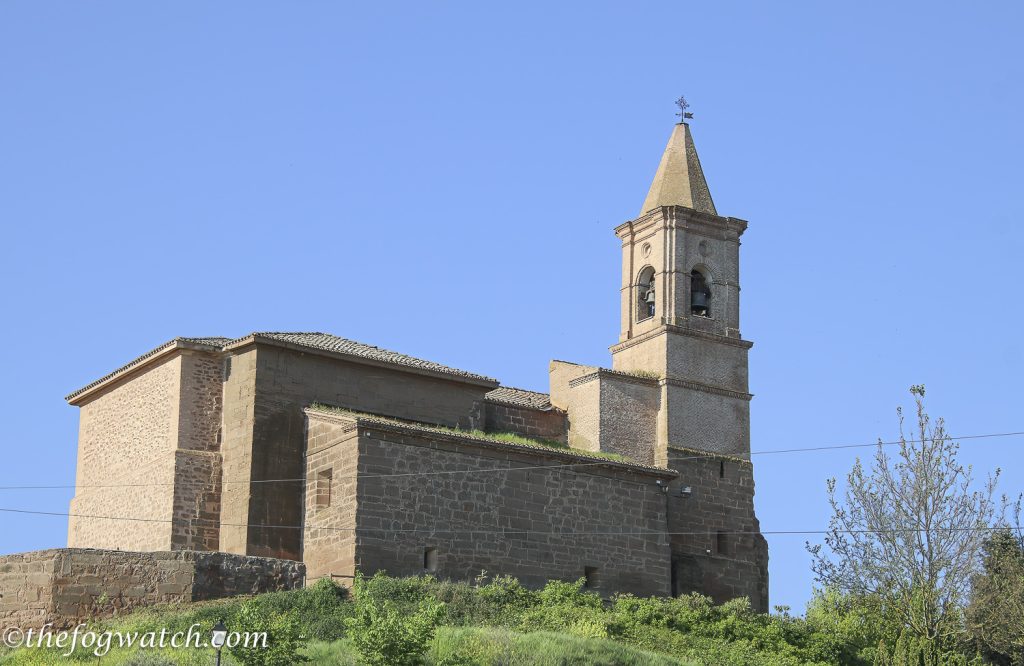
Roland’s Hut
Cresting a rise, we came upon the beehive-shaped Roland’s Hut. The hut is a reproduction farmer’s hut built in the 1990s. It is supposedly close to the scene of a legendary battle of champions between Roland and Ferragut — the Saracen giant. (Spoiler: Roland won).
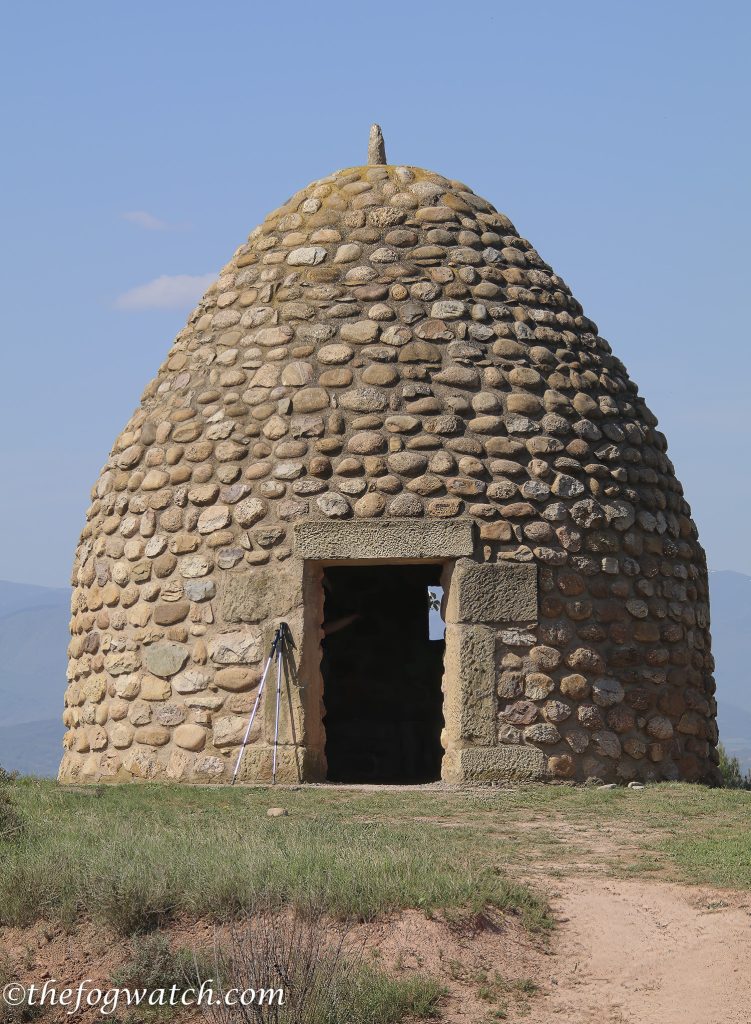
So here’s the legend, according to the signboard:
“Roland and his knights lodged at Alesón when they were on the way to Santiago. Early in the morning they descended from the pass and headed for the hill’s watchtower. From here, the French leader saw Najera’s castle. The lord of the castle was a Syrian giant called Ferragut who was nine feet tall and had the strength of four men. The giant challenged the French to single combat, and Roland accepted.
The fight took place in the plain between Nájera’s castle and the watchtower. After hours of battle between the two fighters on horseback, Roland and Ferragut called a truce. The giant told him that he had great courage and made an offer to finish the combat, but Roland rejected the offer.
The battle continued for two more days and nights. The giant fell over Roland trapping him under his two-hundred-kilogram weight. Roland recalled that Ferragut had revealed that the giant’s only vulnerable part was his navel, so he unsheathed his dagger and plunged it into him, killing him.
This is the way the Arabs left Nájera and how Roland gained his fame for being the best warrior in Christendom.”
— Ministerio de Medio Ambiente
The nearby hill is still called Roland’s Hill (Poyo de Roldán). There are rumours that a great treasure is buried there — payment from the people of Alesón to Roland’s French captains. I had a quick look but didn’t find it nearby 😉
On to Nájera
Then it was on past the ore-crushing plant and on into Nájera. The builders positioned Nájera alongside and partly into a rocky cliff face. After checking into our accommodation, we headed for the monastery of Santa Maria de la Real. The entrance was fenced off and it was clear that a fairly major renovation project was underway. But a small sign directed us around the side along a muddy, rocky path, and in through a small door. The monastery has a richly decorated church built onto the entrance to a cave. This is intriguing! Thus there is a legend.
In 1044, as the story goes, King Garcia III de Nájera was contemplating a forthcoming battle with the Moors. This day, he went out hunting and saw a partridge. He sent his falcon in pursuit and the two birds flew into a cave. When the king followed, he saw a strange light coming from deep inside the cave. And there he found an ancient wooden sculpture of the Virgin Mary with a bell on one side, a vase of white Madonna lilies at her feet, and a lamp on the other side. The vision lived with him and he saw it as a good omen. So, with his spirits lifted, he prevailed in the battle, capturing Calahora.
In gratitude, he decided to build a hostel for pilgrims and a monastery in honour of the Virgin. The image we see today is a C13th Gothic carving. The Royal Palace of Nájera donated the statue, named ‘the Virgin of the Rose’.
The Cluniac Order ran the monastery from 1079. It became an important centre of Cluniac power, associated with helping Alfonso assert his control over Rioja. Interestingly, in 1142, when the Abbot of Cluny (Peter the Venerable) visited the monastery, he met with Arabic translators and he commissioned the first translation of the Koran into a European language. This was a major contribution to Christian-Moslem relations. While the Abbot of Cluny considered Islam to be a Christian heresy, his work nonetheless provided the basis for a more rational approach to Islam, by enabling scholars to base their views on actual Islamic sources, rather than the negative emotional fabulation (or fake news) of earlier Western Christian writers.
The Retable behind the altar is a striking Baroque C18th piece depicting the miracle of the Virgin in the Cave, along with saints Benito and Escolastica, the founders of the male and female orders respectively, of the Benedictines. The central sculpture is reputed to be the original one found by Don Garcia in 1044. The whole Retable is richly gilded and painted. Today, Franciscans administer the monastery.
People once lived in the caves that adorn the cliff face. And therefore it would not have been an easy life, but it would certainly have been defensible, with a view out over the agricultural plains. Overhead, the storks wheeled and turned, before heading back to their nests perched on the church spires and on the power poles. There were young storks in the nests. And dusk brought the rhythmic clacking of beaks as the parents fed the young nestlings.
In summary, We started out from Navarrete with its ancient pilgrim hospital, past Roland’s Hut, the site of a David and Goliath battle between Christians and Moslems, and on to Nájera where a bird and a vision decided the fate of a battle, and a French abbot gave us the first Western translation of the Koran to build better understanding between two great faiths. With this in mind, we headed back to our hostel (Hostal Ciudad de Najera) and so to sleep.

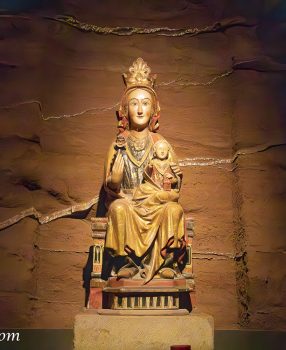
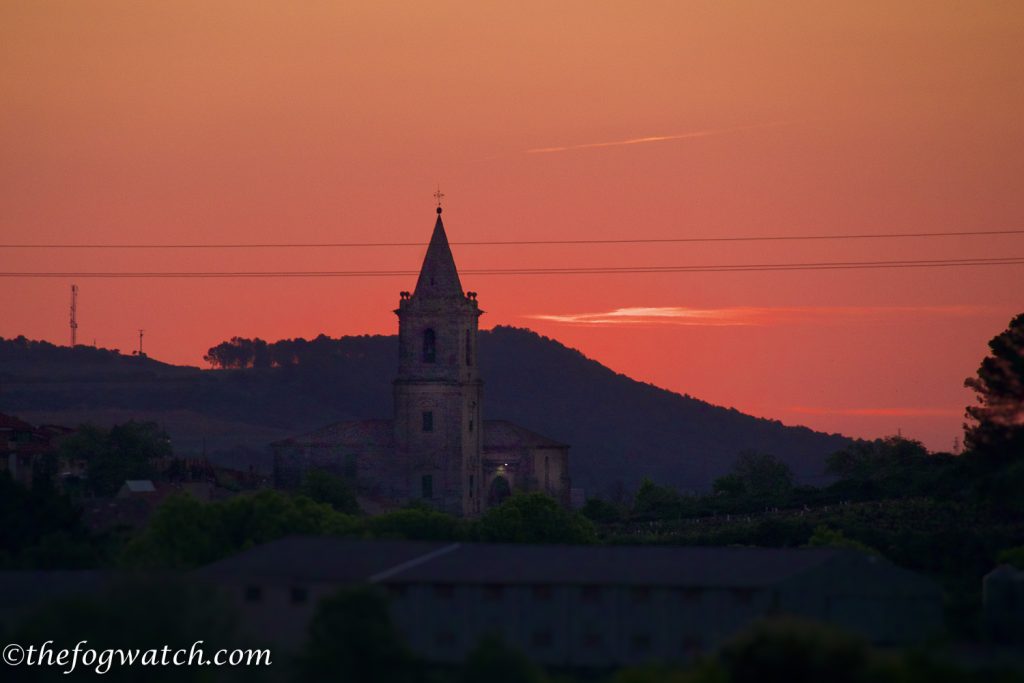
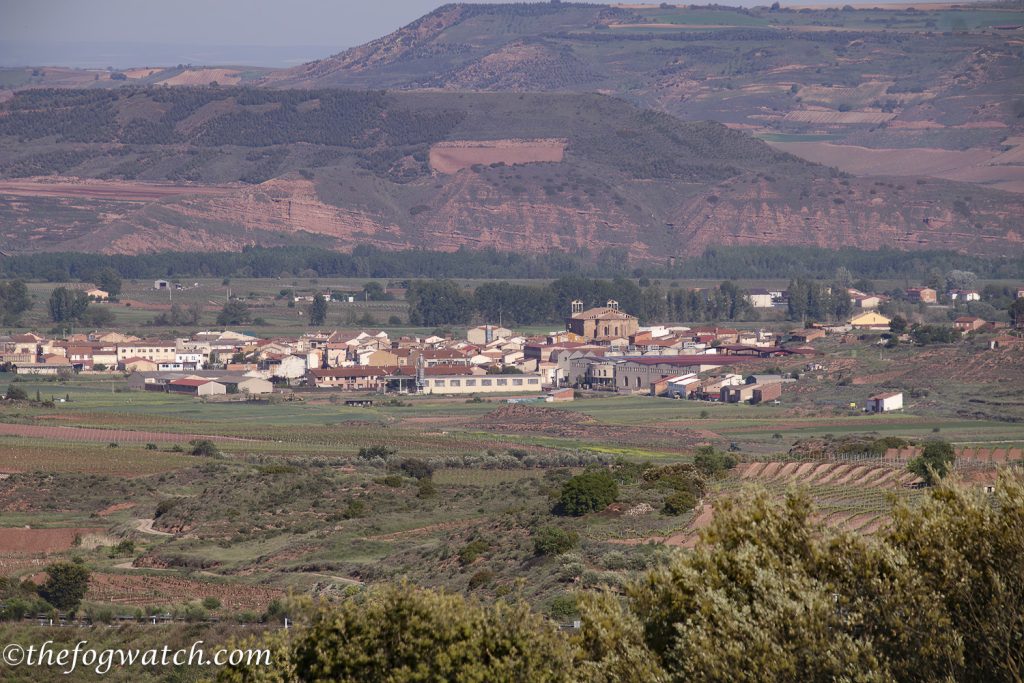
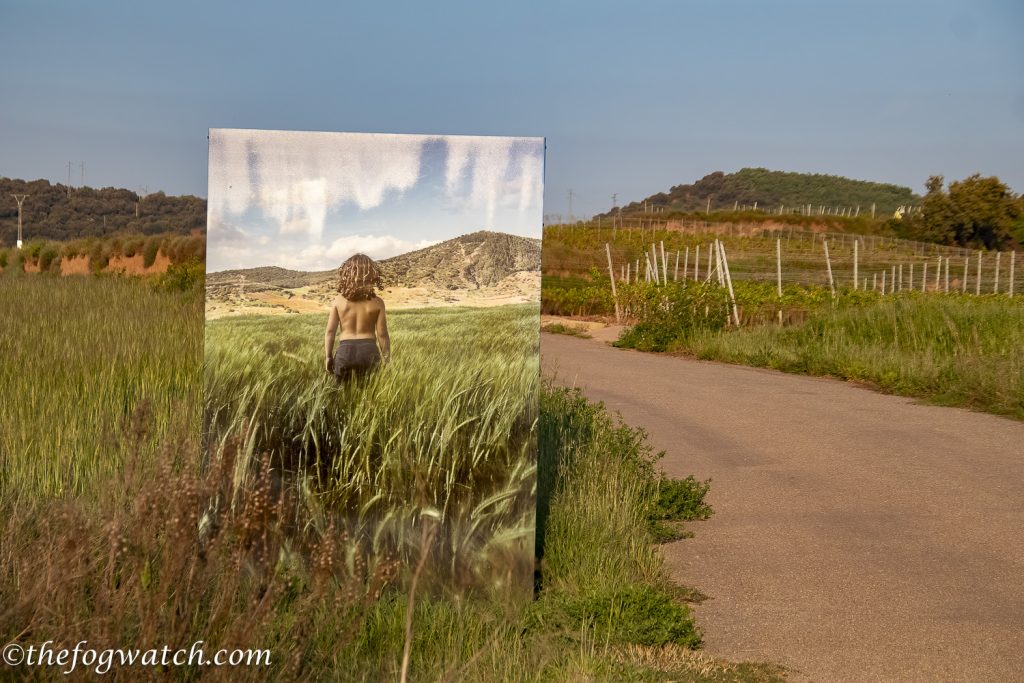
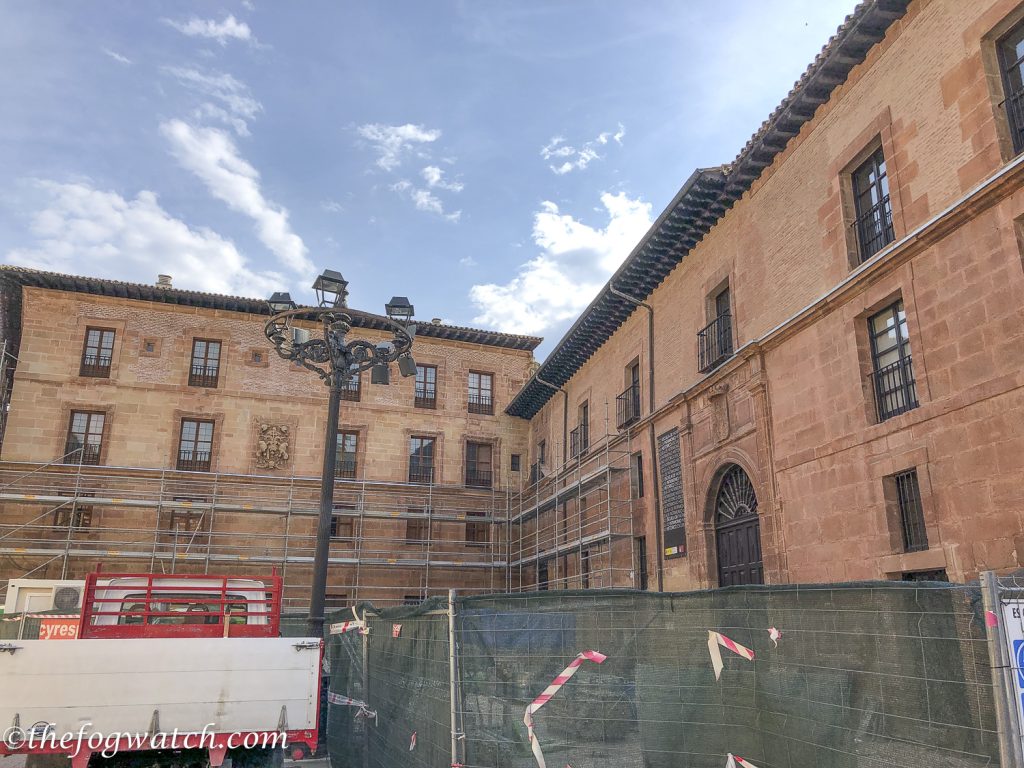
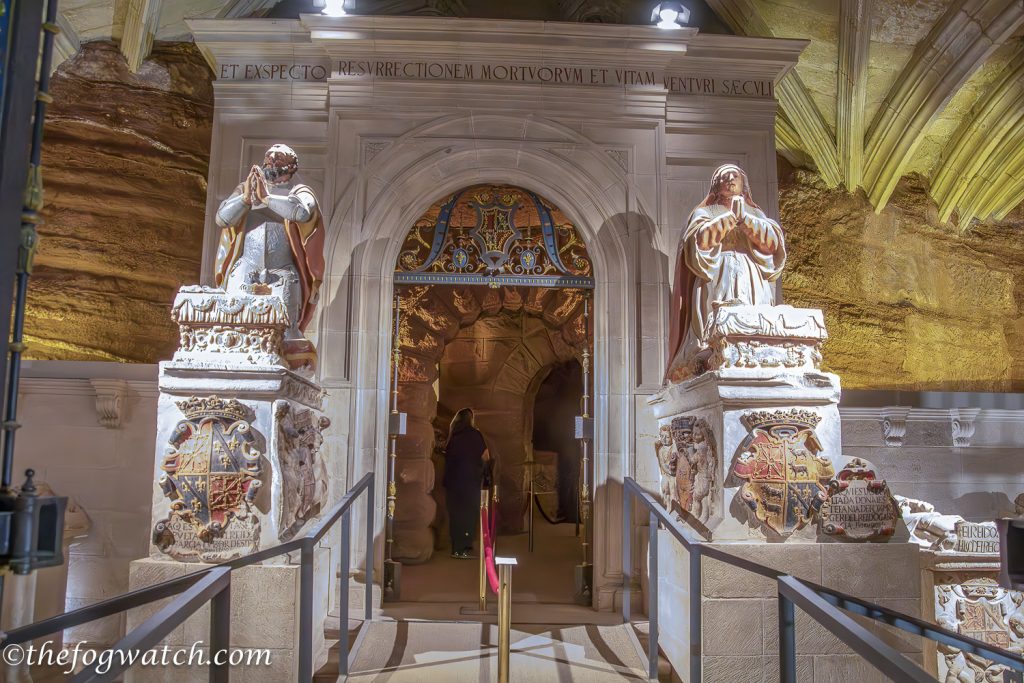
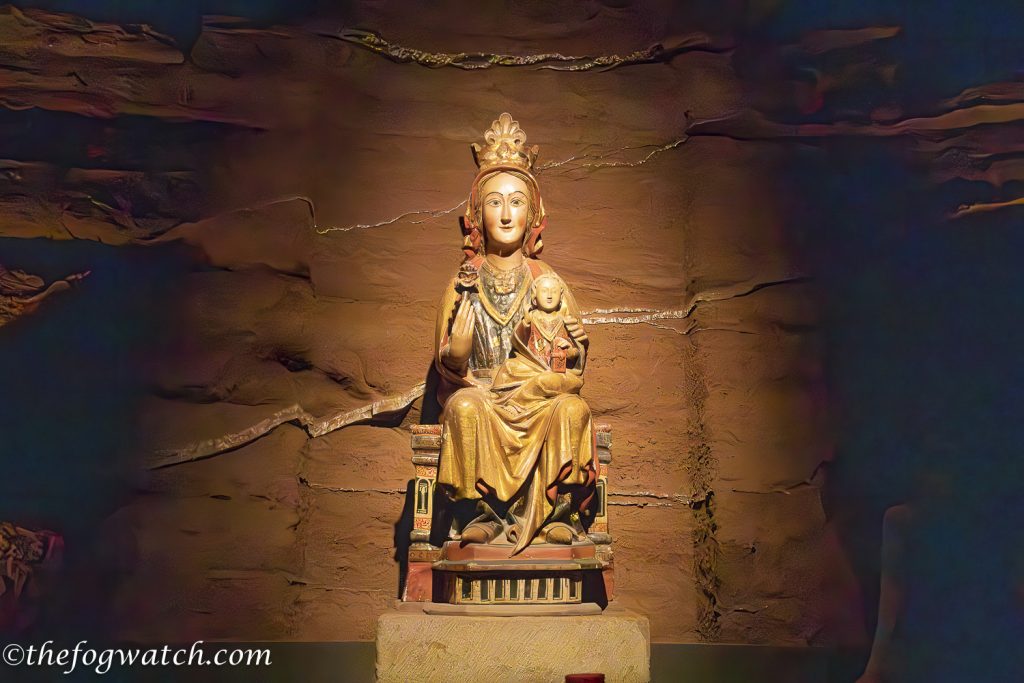
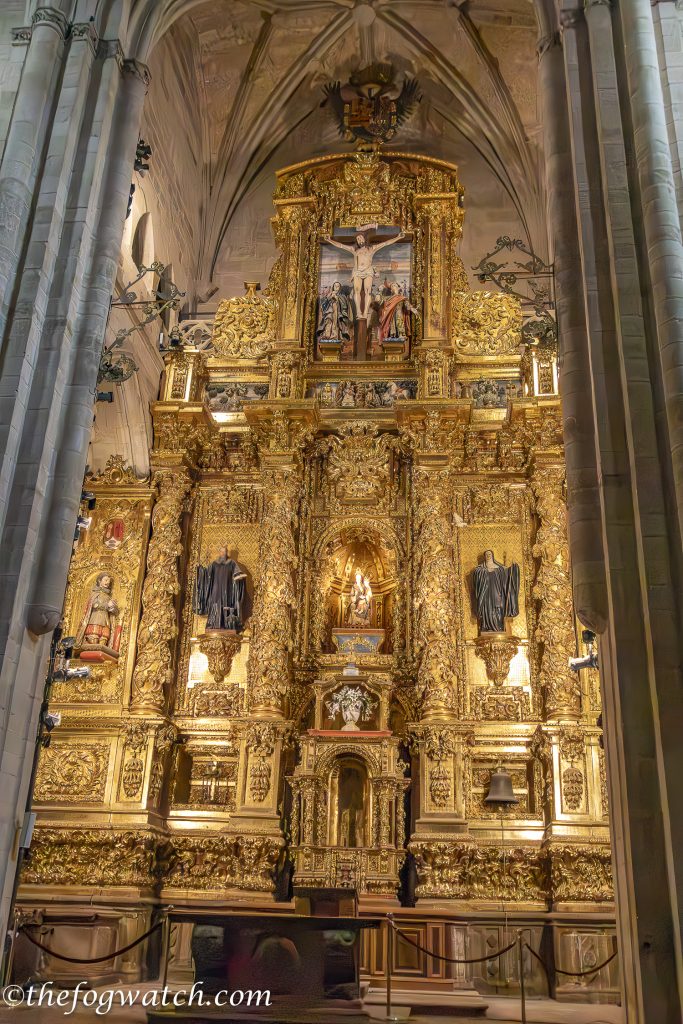
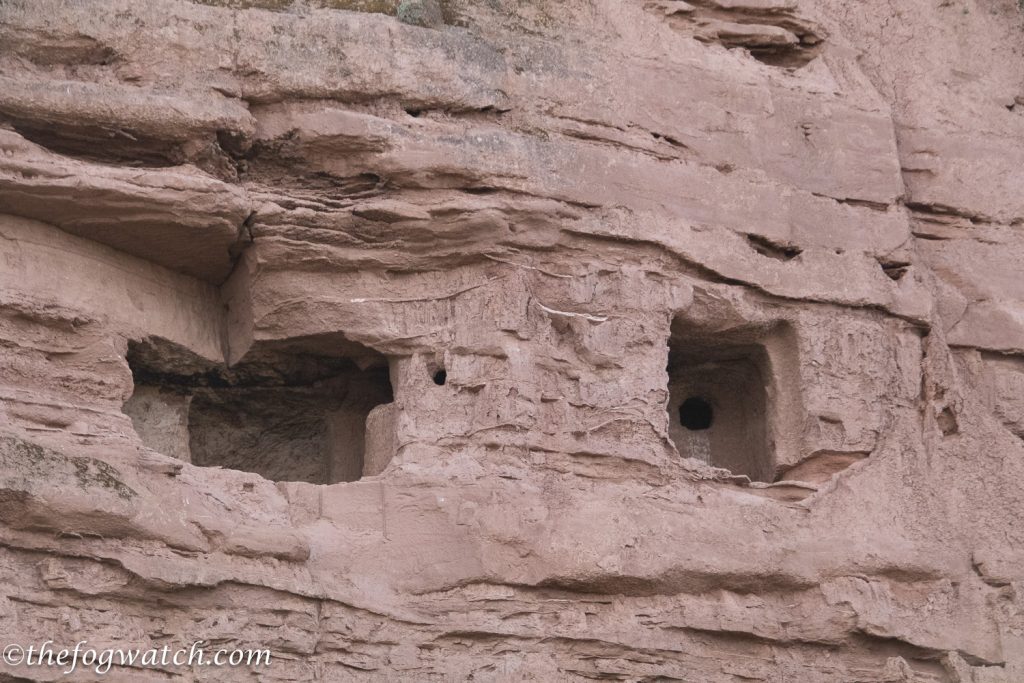
This post brings back memories of wandering the Camino with you and Sharon, engaging in discussions that intertwined art, history, and random tidbits. Love it.
Thanks Tara — yes great memories — Looking forward to catching up in person again soon!